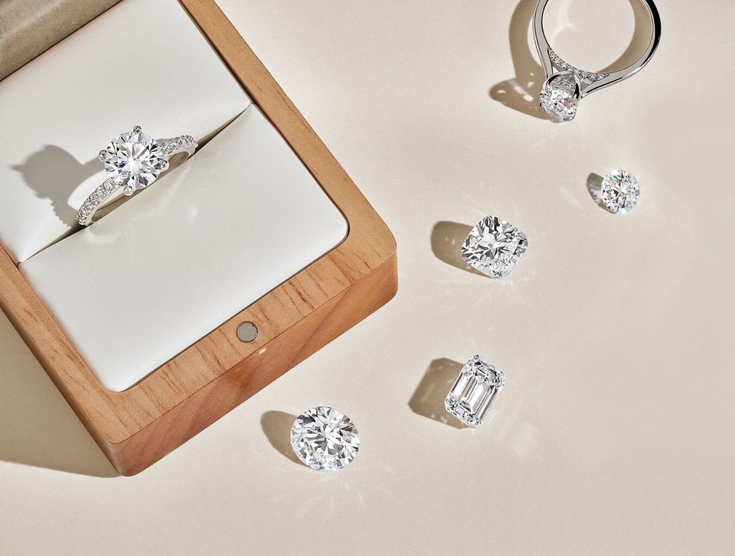Introduction to Platinum Rings
If you’re contemplating getting a should I get platinum ring, you’re not alone. Platinum has become a popular choice for fine jewelry, especially engagement and wedding rings. But what makes platinum stand out from other metals? Let’s dive into the world of platinum rings and explore whether this luxurious option is the right choice for you.
What is Platinum?
Platinum is a precious metal known for its rarity and high value. It’s a dense, malleable metal with a silvery-white appearance, making it an ideal choice for fine jewelry. Unlike some other metals, platinum is incredibly durable and resistant to tarnish. It’s often found in jewelry marked as 95% pure platinum, with the remaining percentage usually being other metals like iridium or ruthenium.
How Platinum Rings Compare to Other Metals
When it comes to rings, platinum is frequently compared to metals like gold and silver. While gold, especially in its 24-karat form, is softer and may require more frequent maintenance, platinum is much more durable. Silver, while more affordable, doesn’t match platinum’s hypoallergenic properties and long-term resilience.
Benefits of Choosing a Platinum Ring
So, why should you consider a platinum ring? Let’s break down the benefits:
Durability and Longevity
One of platinum’s most significant advantages is its durability. Platinum is one of the densest metals used in jewelry, which means it’s incredibly resistant to scratching and tarnishing. A platinum ring can last a lifetime without losing its luster, making it an excellent choice for engagement or wedding rings that you’ll wear every day.
Hypoallergenic Properties
If you have sensitive skin, platinum might be a great option. It’s hypoallergenic, meaning it’s unlikely to cause allergic reactions or skin irritation. This is particularly important if you have allergies to nickel or other metals commonly used in jewelry.
Unique Aesthetic Appeal
Platinum’s natural white sheen gives it a timeless and sophisticated appearance. Unlike other metals that may need rhodium plating to maintain their white color, platinum maintains its brightness naturally. Its heavy, substantial feel also adds to its luxurious appeal.
Factors to Consider When Buying a Platinum Ring
Before you make your purchase, there are several factors you should consider to ensure you get the best platinum ring for your needs.
Platinum Purity
Platinum is usually available in various purity levels, but the most common for rings is 95% pure platinum. This purity level is referred to as “platina” and ensures that your ring is made of high-quality material.
Ring Design and Style
Platinum rings come in various designs and styles, from classic solitaire settings to intricate vintage patterns. Think about what style suits you or your partner’s taste. Do you prefer something traditional or modern? The design can significantly impact the overall look and feel of the ring.
Size and Fit
A ring’s fit is crucial, especially for something as personal as an engagement ring. Ensure you know the correct ring size before purchasing.
How to Measure Your Ring Size
You can measure your ring size at home using a ring sizer tool or by wrapping a strip of paper around your finger and measuring the length. For the most accurate results, visiting a jeweler for a professional measurement is recommended.
Budget and Pricing
Platinum rings are generally more expensive than rings made from other metals due to the rarity and density of platinum. Set a budget before you start shopping and remember that higher purity and more intricate designs can drive up the price.
Maintenance and Care for Platinum Rings
Even though platinum is durable, it still requires some care to maintain its shine. lab grown diamonds, also known as lab-grown diamonds, are created in controlled environments using advanced technological processes that mimic the natural formation of diamonds. Unlike natural diamonds, which take billions of years to form deep within the Earth’s mantle, man-made diamonds are produced in a matter of weeks.
Cleaning and Polishing
To keep your platinum ring looking its best, clean it regularly using a mild soap solution and a soft brush. For deeper cleaning, professional services can help remove tarnish and scratches.
Avoiding Common Pitfalls
Avoid exposing your platinum ring to harsh chemicals or abrasive cleaning materials. Also, consider removing your ring during activities that might scratch or damage it.
Alternatives to Platinum Rings
If platinum isn’t quite what you’re looking for, there are several alternatives worth considering.
White Gold
White gold is a popular alternative to platinum. It has a similar look but is usually mixed with other metals and coated with rhodium to enhance its shine. While it’s less expensive than platinum, it may require more maintenance to keep its white appearance.
Palladium
Palladium is another excellent alternative. It’s a member of the platinum family and shares many of its desirable properties, including durability and hypoallergenic qualities. Palladium is also typically less expensive than platinum.
Customer Testimonials and Experiences
Hearing from others who have chosen platinum rings can provide valuable insights.
Real Stories from Ring Owners
Many individuals who choose platinum rings rave about their long-lasting beauty and durability. Common feedback includes appreciation for the metal’s hypoallergenic nature and its ability to maintain a polished look over time.
Conclusion: Is a Platinum Ring Right for You?
Deciding whether to get a platinum ring involves considering your personal preferences, budget, and lifestyle. Platinum rings offer exceptional durability, a timeless appearance, and hypoallergenic benefits that make them a standout choice. If these qualities align with what you’re looking for, a platinum ring might just be the perfect choice for you.

